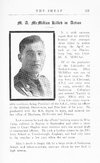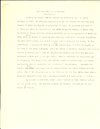“…life, and death, honor, and liberty:” World War I
In early August 1914, Britain and Canada declared war against Germany; by 1 November 1914 the first group of University of Saskatchewan student recruits marched to the train station, heading for training in Winnipeg..
As the Great War opened the University of Saskatchewan was not yet seven years old with just three graduating classes totaling less than fifty earned degrees. Before 1914 Murray was concerned with the growth of the University and the education of the province through the Department of Extension. The war changed everything. All thoughts of expansion and growth were put on hold. Within three months a recruiting program was instituted on campus. The positions of faculty and staff who enlisted were kept open and they were given half pay. An additional allowance was given married men. Students who enlisted were given the credit for one year’s work. The University also started military instruction and drill for the students and staff. The first recruitments went into University Battalions trained at McGill who went overseas as reinforcements for the Princess Pats. In 1916 the Western Universities Battalion was formed and the four western universities each supplied a company. [Sheaf]
Murray’s war effort went beyond recruitment. It had become apparent that men in arms alone would not win the war. Science and innovation would be the key to victory. In late 1916 Murray joined the newly created Honorary Advisory Council for Scientific and Industrial Research of Canada. He worked at a frenetic paced in his new role directing research into areas that would benefit war effort. His efforts did much to shape the research interest that would develop on campus over the next several decades.

University casualties during the First World War were high: “Only one in five of the students who went to the front returned unscathed; the mortality rate was twice that of the army as a whole.” (Hayden, p. 83). It is almost impossible to imagine what this meant, to so young an institution, and one so relatively small. Three hundred and thirty students –the equivalent of 74% of the entire student body in 1914 – served. An overwhelming majority did so voluntarily.
Faculty and staff, too, joined: four instructors, three lecturers, at least 11 staff, and five professors. During the 1916-17 session, with neither teaching staff nor students remaining, the College of Engineering was closed temporarily. Of the students, faculty and staff who enlisted, 67 died; over 100 were wounded; and 33 were awarded medals of valour.
Murray had as great a sense of duty as anyone of his time, and certainly no prescience about the horrors to come. We may well look back at the articles written about those who served at the front and imagine their lives; we may well read about those who died so young and wonder what might have been. Walter Murray knew them. He would have known every student; every staff member. As the casualty lists grew, the names were no mere statistics, no historical speculation for him. Some had been his friends and colleagues; most were those for whom above all Murray wanted the University to serve.

Murray eulogy for Charles Cameron, a student then professor at the University:

Murray eulogy for James Douglas Cumming, a student who was killed in action in 1917:
Related Items
Database of University faculty, staff and students in World War I
https://library.usask.ca/uasc/history/wwi.php

